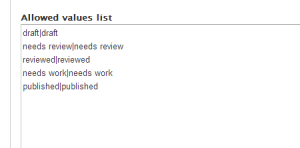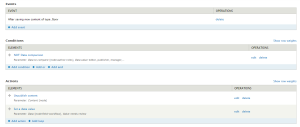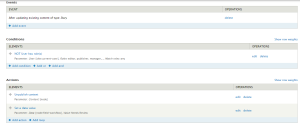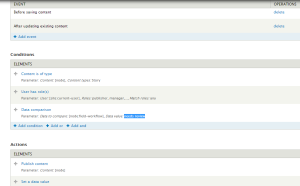Aviator Online: Full Feature Analysis for India
Aviator has become a real-time risk-reward game focused on climbing multipliers and strategic exits. The goal is to wager and withdraw before the plane vanishes. Each extra second increases the potential payout, turning each takeoff into a strategic challenge.
Since the title exploded onto the market in 2019, the game has built a massive global following, pulling in millions of players every month. The Indian gaming community strongly favors Aviator, because of its accessibility and high-engagement gameplay.
Reasons Aviator Dominates India’s Crash Gaming Market
Accessibility & Learning Simplicity
The mechanics are easy enough for anyone to understand, allowing even first-time users to participate immediately. The entire experience is built around a single multiplier, making onboarding instant.
Nearly all websites provide a free practice version. The demo uses virtual coins, helping users test timing strategies with zero monetary risk, providing a safe introduction to the game.
Core Systems Behind the Aviator Crash Game
The experience is enhanced by advanced gameplay functions, providing tools that increase control and user comfort:
- Approx. 97% Return to Player — This theoretical value indicates long-term average returns.
- Independent double stake feature — This allows split-risk gameplay for flexible strategy.
- Automated wagers and auto-withdraw trigger — Ideal for low-risk setups.
- Live game analytics — Users analyze previous crash points in real time.
- Social interaction panel — Lets players see others’ bets and results.
Platform Availability & Device Support
The game is fully optimized across major platforms: iOS devices. Optimized UI ensures smooth performance everywhere. Indian players often enjoy English or region-friendly versions.
How to Start Playing Aviator
Registration and Basic Requirements
The first step is selecting a reputable gaming website. Most sites ask for simple account creation steps. The next step involves choosing a deposit option accepted locally.
Steps for Adding Balance and Betting
Different portals offer diverse banking methods: netbanking. Small stakes help control early risk, such as ₹10–₹50.
Once takeoff begins, the number climbs rapidly. Only early and accurate decisions lead to winning. This dynamic makes each round unpredictable.
Demo Mode Training
The demo mode https://karwaanheritage.in/en-in/ provides a practice environment. Users receive a virtual bankroll, helping them understand volatility.
Aviator Feature Overview
| Feature | Explanation | Why It Matters |
|---|---|---|
| RTP 97% | Long-term theoretical payout value | Improves expected statistical outcomes |
| Dual Bets | Two wagers at once | Split-risk or double-chance strategy |
| Auto Cashout | Pre-set exit multiplier | Helps reduce emotional decision-making |
| Live Stats | Past rounds and multipliers | Better situational awareness |
Bonus Systems, Betting Approaches & Safe Play Principles
Common Bonus Types for Aviator Players
A wide range of reward systems attract new Aviator players. They allow players to explore features with additional balance, especially during early sessions.
Players often encounter several primary promotion groups: free-entry bonuses, top-up doubling rewards, refund-style bonuses. Free-play promotions allow risk-free exploration. Deposit boosters extend bankroll size dramatically. Loss recovery promotes more sustainable long-term play.
All bonuses come with terms and conditions: turnover demands, validity duration, cashout rules. Awareness ensures proper use of promotional value.
Popular Methods Applied by Aviator Users
There is no reliable prediction system in crash mechanics. However, players often adopt structured approaches, to guide timing and cash-out habits.
- Small Gain Safe-Cashout Approach — Users exit extremely early for micro-wins. This offers high safety but low profit per round.
- Hedged Double-Wager Technique — One bet exits early for security, the second stays longer. It offers both predictable and adventurous outcomes.
- High-Risk Long-Hold Method — Users wait for rare big payouts. Losses can be severe.
- Incremental Recovery Method — The objective is regaining profit after a downturn. This is extremely risky and requires strict limits.
Approaches influence behavior but not outcomes. None of them guarantee winning patterns.
Responsible Gaming Guidelines
Due to the rapid nature of the game, safety practices protect players. Setting boundaries reduces financial risk.
- Determine total allowable losses before starting.
- Establish win/loss thresholds.
- Take advantage of built-in safety features.
- Never escalate bets due to frustration.
- Consider the game a leisure activity rather than profit source.
Sticking to rules prevents destructive patterns. They support sustainable, healthy play.
Legal Framework & Regional Considerations
The country’s digital gaming laws are decentralized. Regional laws vary dramatically. Some states permit online play.
Certain states enforce bans on real-money online games. Players must confirm their region’s rules before participating.
Comparative Strategy Matrix
| Approach | Core Idea | Risk Level |
|---|---|---|
| Early Exit | Cash out near low multipliers | Low |
| Dual Bet | Two simultaneous wagers with split goals | Medium |
| Multiplier Chase | Holding for high multipliers | High |
| Progressive Scaling | Increasing bet size after losses | Very High |
Summary and Essential Takeaways
Aviator stands out as a leading option within India’s online gaming space due to its simplicity. Its mixture of chance-based volatility and user-controlled exit timing makes each round exciting. The structure of the game appeals equally to beginners and experienced players.
Crash points cannot be forecast using trends or patterns. Therefore, strategy only influences behavior—not results. Players must keep expectations realistic.
Community interaction enhances engagement. Social features help gamify the experience. The game evolves into a shared experience rather than solo play.
Some regions allow digital wagering while others restrict it. Checking regional laws avoids complications. Awareness ensures safe participation.
Key Safety & Strategy Highlights
- Use only funds you can afford to lose.
- Stop immediately when limits are reached.
- Do not escalate bets impulsively.
- Practice with virtual balance before real-money attempts.
- Always check withdrawal conditions for clarity.
Adhering to guidelines keeps sessions enjoyable. Aviator should be treated as a leisure experience.
Risk vs Reward Breakdown
| Factor | Intensity | Possible Outcome |
|---|---|---|
| Low Multiplier Play | Minimal | Small & consistent |
| Medium Multiplier Play | Moderate | Balanced returns |
| High Multiplier Play | High | Large but rare gains |
| Long-Hold Big Chase | Extreme | Very high but unpredictable |
Extended Closing Remarks
Many Indian players now prefer real-time multiplier games over traditional casino formats. Its balance of simplicity and adrenaline makes it unique. New players join daily, expanding the community.
However, sustainability depends on responsible play. The most important takeaway is moderation. Careful timing often outperforms reckless chasing.
Winning is a possibility, but losses must always be expected. Treat each round as independent and unpredictable. Maintaining perspective ensures lasting satisfaction.




